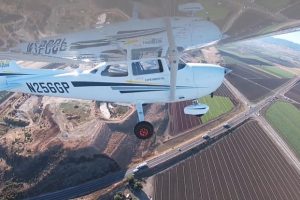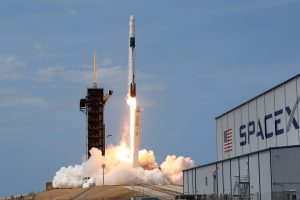SpaceX has released uncut video of one of its latest Falcon 9 launches and landings, including unparalleled onboard rocket audio across all flight stages.
The rocket in question, Falcon 9 booster B1059, ended months of delays when it finally lifted off on August 30th, sending a new upper stage, payload fairing, and an Argentine Earth observation satellite on its way to orbit. Branded as SAOCOM 1B, SpaceX launched the second of a pair of synthetic aperture radar satellites less than 15 minutes after lift-off from Falcon 9, followed by two rideshare payloads approximately 45 minutes later.
Booster B1059 separated a little over two minutes after the launch from the rest of Falcon 9 and rapidly flipped around to perform a boostback burn – literally slowing down to zero from Mach 5 and then boosting several hundred miles back to the Florida coast. The rocket concluded its fourth launch with a gentle landing at Landing Zone-1, effectively completing an aerial journey of ~200 km (~120 mi) in less than eight minutes at an average speed considerably faster than the speed of sound.
One thing stands out above all in the booster camera video SpaceX released unexpectedly after mission completion: an uninterrupted audio recording of the rocket from lift to landing. In the past, SpaceX has released the video from the onboard camera of a Falcon 9 booster, the latest instance of which was released in 2016. In another memorable event, the launch of NASA’s TESS exoplanet observatory in April 2018 by SpaceX has been blessed with uncut booster camera footage during the live webcast. SpaceX never released the footage on its own technically but taking it off the webcast was simple enough to give a clean, uninterrupted view of the launch and landing of a Falcon 9 booster.
Regardless, SpaceX has never included audio in any previous cases, only webcasts with booster camera video. Most modern launch vehicles – including Falcon 9 – are commonly known to be equipped with multiple high-fidelity microphones. Unintuitively, in the event of a malfunction, several independent, time-synchronized audio recordings can be used to practically triangulate the source of rocket hardware problems – a SpaceX strategy used to analyze the first in-flight malfunction of Falcon 9 in 2015 for its benefit.
In this case, the audio does not serve any technological purpose but provides the best birds-ear perspective of a Falcon 9 launch yet. Roughly accelerated by a factor of four, SpaceX’s SAOCOM 1B audio records the passenger jet-esque whine of Falcon 9’s Merlin 1D turbopumps, the brief silence of the engine cutoff, the whistle and vibration of the atmospheric reentry, the thump of cold-gas thrusters that sustain the attitude of the rocket in vacuum, and even the clunk of landing leg deployment, among many other notable sounds.
Want to buy a Tesla Model 3, Model Y, Model S, or Model X? Feel free to use my referral code to get some free Supercharging miles with your purchase: http://ts.la/guanyu3423
You can also get a $100 discount on Tesla Solar with that code. Let’s help accelerate the advent of a sustainable future.





